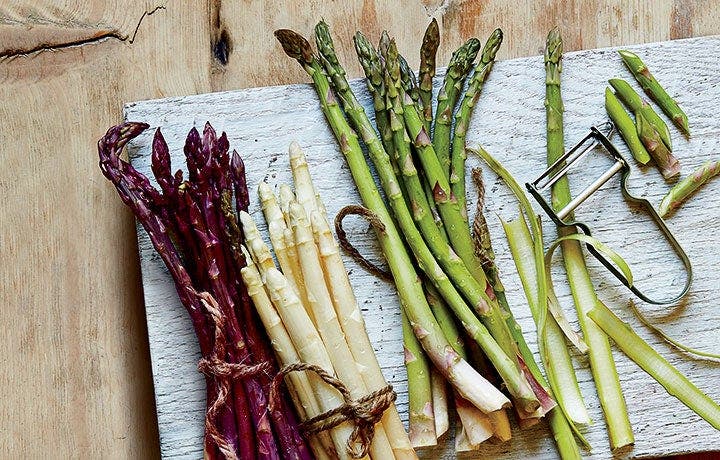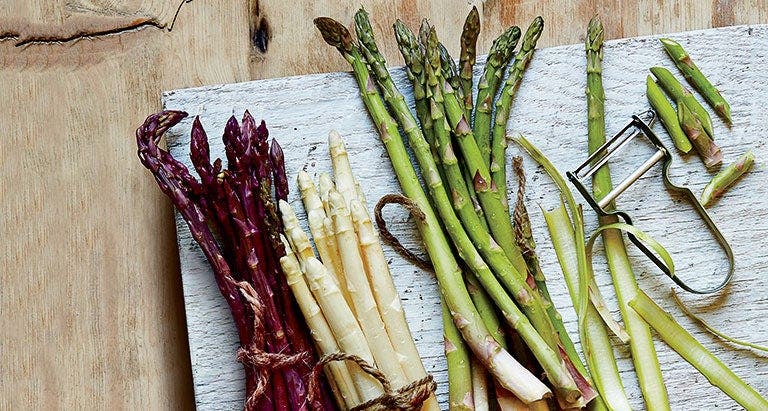8 Ways to Make Asparagus


I love to sit down with a bunch of fresh asparagus and snap the stalks—a relaxing change from the usual precise slicing and dicing required with other vegetables. Some people trim off the tough parts with a knife. But, just as my mother did, I hold both ends of a stalk and bend it gently until the rigid lower part snaps off. This way, I’m sure every bit of the spears I serve will be tender. (And no, I don’t throw the bottoms away: I freeze them for making vegetable stock.)
Go beyond green: know your colors
Purple Developed in Italy, varieties such as Violetto d’Albenga have a nutty flavor some liken to artichokes, and they’re less fibrous than green asparagus. Since only the skin is purple, and the color disappears when the stalks are cooked, this variety is best used raw.
White Thicker and with more compact buds than their green cousins, these stalks also have a more delicate flavor. To “bleach” them, they’re buried in soil as they grow so they remain pale rather than developing the familiar green pigment.
Caring and handling
Wrap unwashed asparagus in paper towels, then place in a plastic bag in the vegetable bin. Use within three days, while it’s sweet, plump, and perfect.
The raw and the cooked: more ways to make asparagus
1. Cut asparagus diagonally into 1-inch lengths, boil or steam until just tender, and toss with penne pasta. The simplest sauce? A few spoonfuls of crumbled feta cheese or a little butter and freshly grated Parmesan tossed in while the pasta is hot. Best with green or white asparagus.
2. Raw asparagus stalks (use thick ones) make a great salad. Slice them thinly on the diagonal (leave the tips whole), or shave lengthwise strips with a vegetable peeler. Combine with thinly sliced radishes or soft lettuce leaves, and dress with a citrus-mustard vinaigrette. Great with any color asparagus!








